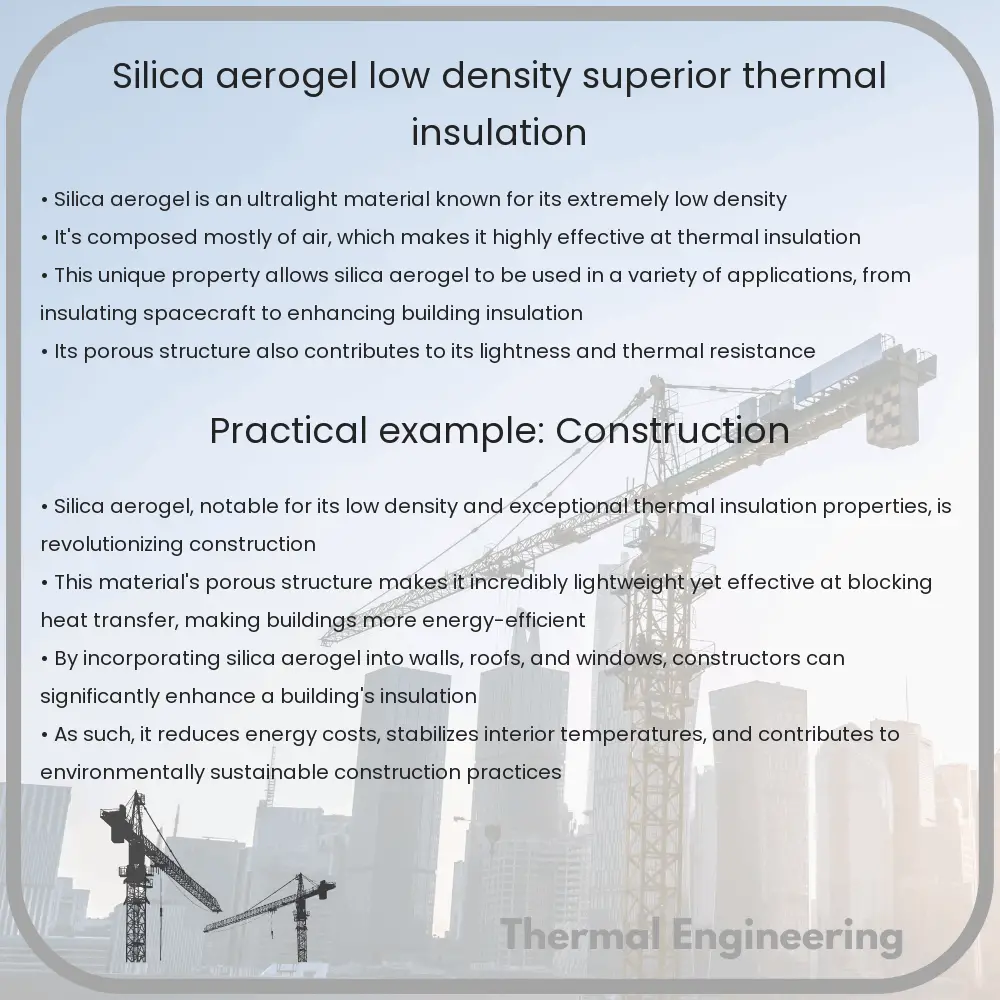Explore the unique properties and diverse applications of silica aerogel, a lightweight, highly insulating material known as “frozen smoke.

Introduction to Silica Aerogel
Silica aerogel is a remarkable material known for its extremely low density and superior thermal insulating properties. Often referred to as “frozen smoke” due to its translucent appearance, silica aerogel is composed of over 95% air, making it one of the lightest solid materials available. Its structure is primarily made up of silicon dioxide, similar to ordinary glass, but it is organized in a highly porous, lattice-like manner.
Properties and Manufacturing
One of the most outstanding features of silica aerogel is its low density, which typically ranges from 0.005 g/cm3 to about 0.020 g/cm3. This property results from its 90 to 99.8 percent porosity. The manufacturing of silica aerogel involves the process of sol-gel chemistry followed by supercritical drying. This allows the liquid in the gel to be removed without causing the structure to collapse under surface tension, as opposed to what happens with ordinary evaporation.
Applications of Silica Aerogel
- Thermal Insulation: The most celebrated property of silica aerogel is its ability to insulate. With thermal conductivity values ranging from 0.012 to 0.020 W/m*K, it is extensively used in high-performance insulation, from advanced buildings to aerospace engineering.
- Aerospace Engineering: Due to its light weight and insulating properties, it’s used in the Mars Rover and space suits. The material’s protective attributes are essential in extreme environments.
- Day-Lighting: Translucent aerogel panels can allow for natural lighting while providing insulation, useful in architectural applications to enhance energy efficiency.
- Oil Spill Cleanup: The hydrophobic nature of some aerogels makes them suitable for absorbing oil spills while repelling water.
Challenges and Limitations
Despite its useful properties, silica aerogel also faces some challenges in broader application. Its manufacture is expensive and complex, limiting its accessibility and widespread use. Furthermore, silica aerogels are brittle and can easily shatter under pressure, a trait which requires consideration in applications where material integrity is critical. However, ongoing research is directed towards enhancing the mechanical properties and reducing production costs of silica aerogels.
The Future of Silica Aerogel
The future of silica aerogel looks promising as advancements in technology may allow for more cost-effective production and enhanced durability. More widespread use in everyday applications like home insulation and clothing could be on the horizon, transforming the way we utilize this extraordinary material. Researchers are continuously exploring novel methods to improve and capitalize on the unique properties of silica aerogel, indicating a bright outlook for its applications across various sectors.
Silica aerogel remains one of the most fascinating materials in the field of materials science and engineering, combining remarkable properties with potential for significant impact in a variety of fields.